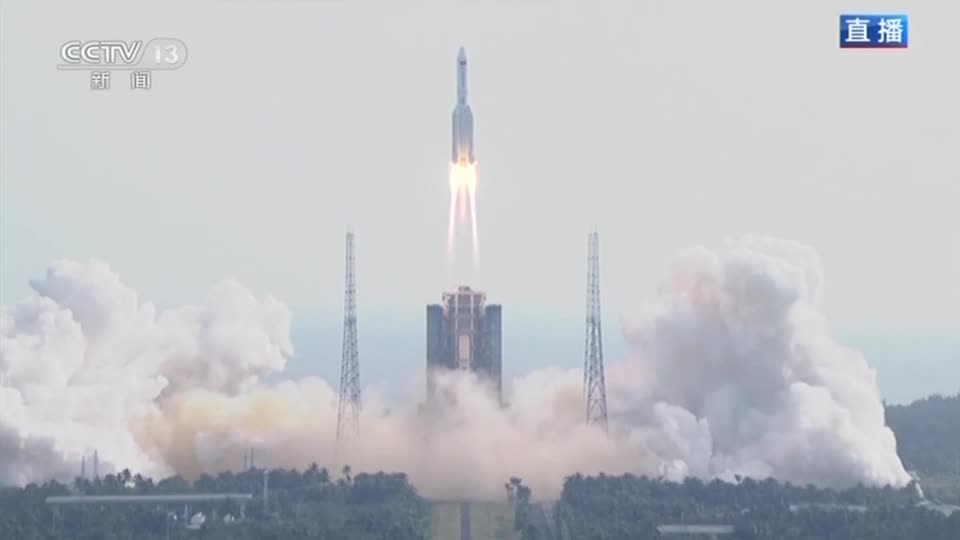
Willie R. Tubbs, FISM News
[elfsight_social_share_buttons id=”1″]
The Chinese space program has again proved itself the intergalactic equal of the owner of a rusty pickup truck clanging and banging its way down a highway while bolts, nuts, and bits of muffler drop on the road below at random intervals.
In both cases, the person operating the mode of transportation is making progress at the expense of others. But, whereas the 1970-something GMC is a threat to only motorists who share a given roadway, the Chinese Communist Party’s version of NASA has made a habit of disregarding the health and safety of everyone who shares the planet on which we all currently reside.
As reported by Scientific American, a rocket, known as a Chinese Long March 5B (CZ5B), was launched on Halloween and delivered a laboratory to China’s space station. Having unburdened itself of the laboratory, the 25-ton rocket has (by design) shut off and is now plummeting toward Earth.
Sometime Friday, or maybe Saturday depending on how reentry plays out, someone at an as-yet-unknowable location might get the grand surprise of having what remains of Chinese rocket CZ5B landing on, near, or around them.
If that advance warning sounds vague, it’s because that’s as specific as the smartest rocket scientists in the world can be when a piece of space junk is hurtling toward the earth in an out-of-control state.
“Our latest prediction for #CZ5B rocket body reentry is: 04 Nov 2022 11:20 UTC ± 3 hours,” the Aerospace Corporation tweeted. “Reentry will be along one of the ground tracks shown here. It is still too early to determine a meaningful debris footprint.”
Our latest prediction for #CZ5B rocket body reentry is:
🚀04 Nov 2022 11:20 UTC ± 3 hours
Reentry will be along one of the ground tracks shown here. It is still too early to determine a meaningful debris footprint. Follow here for updates: https://t.co/KZZ9LgLk0k pic.twitter.com/GlnE8C0Iok— The Aerospace Corporation (@AerospaceCorp) November 3, 2022
As the Aerospace Corporation’s model suggests, the potential impact zone for CZ5B is immense and includes parts of the United States, Central and South America, Africa, India, Australia, and China itself, as well as any number of maritime crash sites.
While Christians are no doubt prayerful that whatever debris reaches Earth lands in an ocean, scientists are working to remind people that the chance of anyone being harmed is remarkably small.
For starters, a great deal of the rocket will disintegrate upon reentry and the remains will reach Earth’s surface as relatively small pieces of debris.
According to Scientific America’s calculations, there is an at-worst 1-in-230 chance any human is struck by this debris. Individual humans each have an at-worst 1-in-6 trillion chance of being hit.
This will come as little comfort to the people of the Ivory Coast, where debris from falling Chinese space junk rained down upon a village, or Borneo, where larger pieces of debris nearly struck a village in the wake of other Chinese rocket reentries.
China has previously drawn rebukes from the international space community for having been fast and loose with the ways it protects Earth from the aftermath of launches and for the communist country’s nasty habit of not divulging to the rest of the world that falling space debris is a distinct possibility.
“All spacefaring nations should follow established best practices and do their part to share this type of information in advance to allow reliable predictions of potential debris impact risk,” NASA Administrator Bill Nelson said in 2021, following a different crash of a Chinese rocket. “Doing so is critical to the responsible use of space and to ensure the safety of people here on Earth.”
China has routinely excused itself from culpability by stating that falling space junk is common practice among nations that engage in space exploration.
This claim is as misleading as the CZ5B is misguided. Other nations do face the challenge of falling rockets and space junk but take steps to mitigate the damage. These steps range from aiming their rockets in such a way that they fall predictively into a predetermined spot in the ocean to equipping rockets with enough power to affect a controlled reentry.
